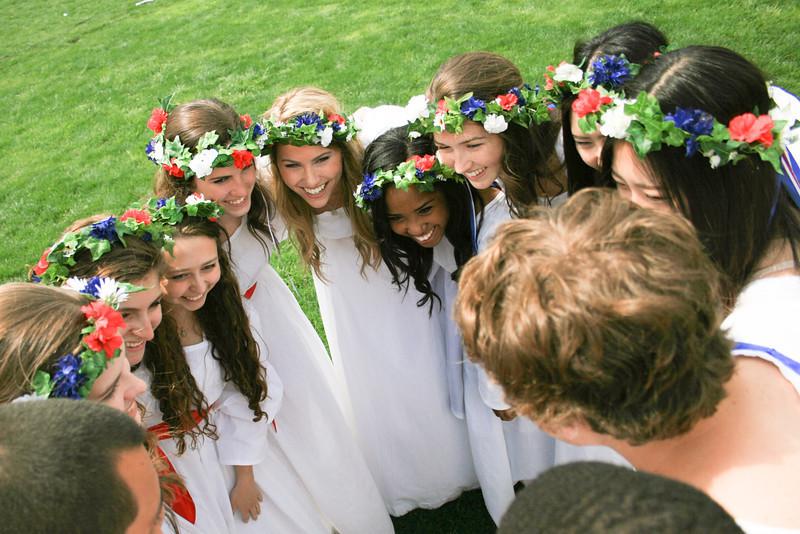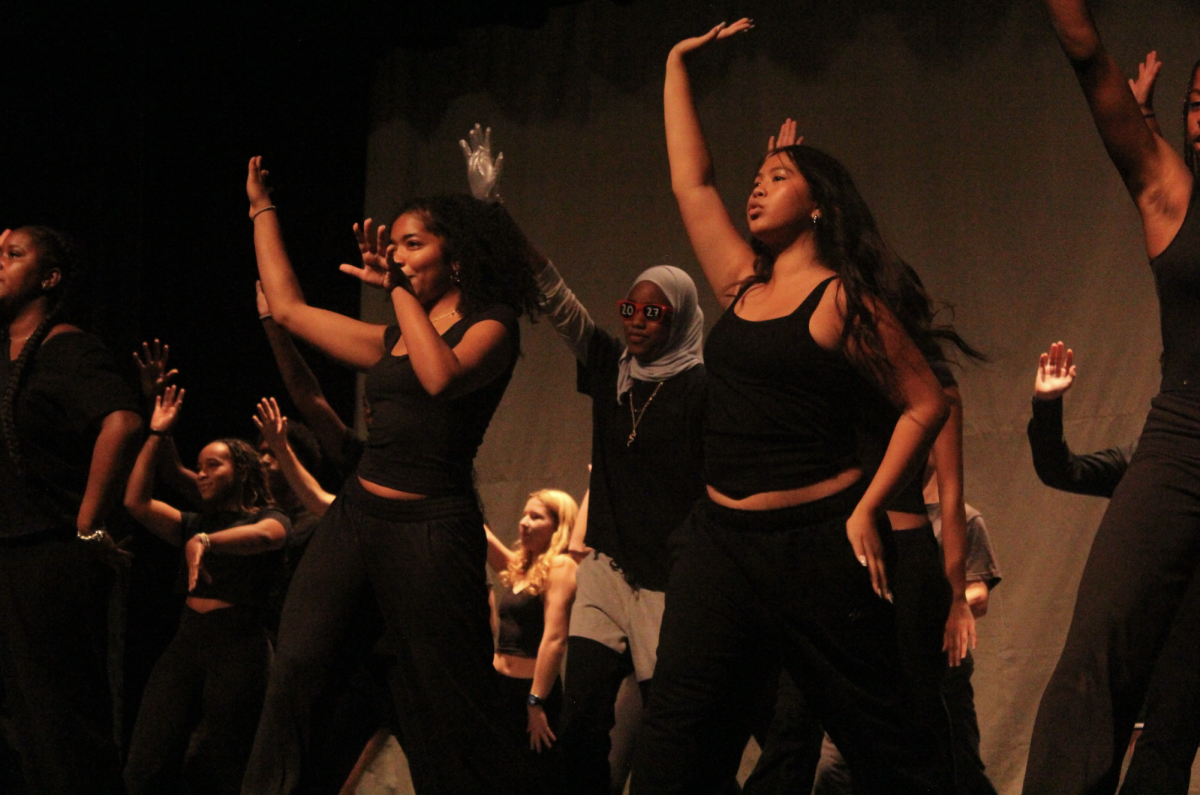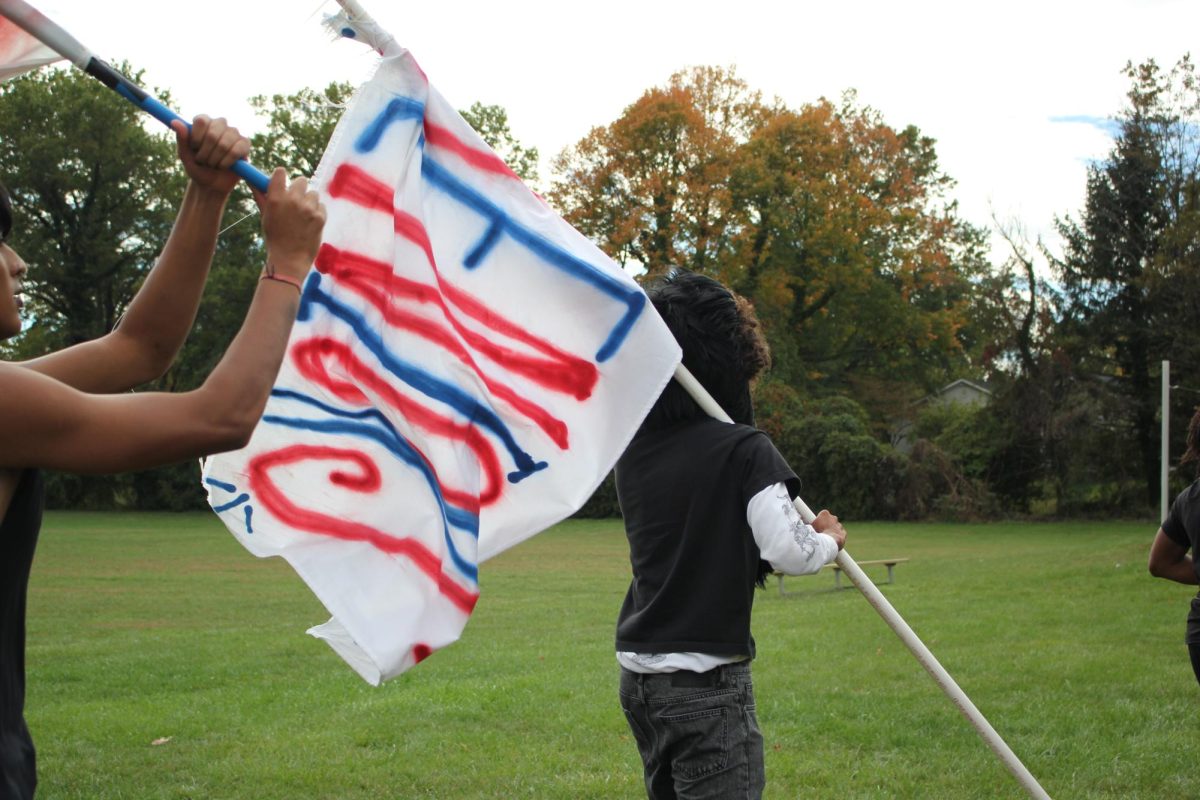By Aaron Klein ’20, Art and Design Director; Ali Chesnick ’19, Copy Editor; Henry Powell ’20, Staff Writer
“What is May Day?” This question is one inevitably asked by nearly every MFS student each time the quadrennial spring celebration comes around again. If the current state of May Day is unclear, its past is shrouded in even more mystery. This spring, WordsWorth set out to uncover not what May Day is, but what it was and how it has changed over the past century.
According to Associate Director of Development Beth Stouffer, MFS has May Day photos, programs, and planning documents dating back to about 1907. Interestingly, Stouffer told WordsWorth that May Day’s frequency has experienced some changes over the years: “If you look through consecutive yearbooks over a long period of time, you can see for a while it was held every other year. Then there was … a gap, and then it was held again. Then it was every four years, every two [years], every four years. It’s been in the quadrennial pattern … for probably at least twenty-five or thirty years.”
Despite not always being held in a constant pattern, May Day has maintained some traditions since its inception: “There are some things that have been traditional for as long as I can remember. [For example,] Pyramus and Thisbe, which … is a Shakespeare… excerpt. Hence, they perform it every May Day for as long as … photographs show. The May Pole Dance is very traditional and has been performed for a long time.”
The May Day court, an aspect of the celebration known as an exceptional honor for seniors, has gone through quite a transformation, Stouffer said: “When Mr. Van Meter was a student here [in] the 1950s and 1960s, the court was selected by the faculty and then … announced to the student body.” She also explained that the honor of the court was not reserved for seniors: “It might’ve [included] some lower school boys as page boys or footmen in the court or train bearers if the queen had a long train.” Stouffer also told WordsWorth that the Queen’s court was an all-female group in the past and that their selection was somewhat of a “beauty contest [or] a popularity contest [and that] it was sort of the in-clique of girls that got picked as the court.” The May Day court system has clearly made great strides in terms of inclusivity and fairness, as members are now selected through a lottery system that interested students may enter. Additionally, there are now male members of the court, as well as a May Day King and Regent, the non-gendered equivalent of King and Queen.
WordsWorth also explored MFS’ photo and document archives in order to uncover more details of May Day’s past. Images of people jousting on fake horses and walking around the MFS fields on stilts reveal just a few of the May Day events which have been lost to time. With photos dating back over 100 years, the MFS photo and document archives paint an incredible picture of the history of May Day at MFS. In one group of photos taken during May Day 1974, students are seen riding on ponies and horses, while others are seen petting sheep and ducks. May Day 1950 featured a series of events titled the “Circus Parade,” which included performances including Pony and Cart with Ring Master, Clowns, Animal Act, Tightrope Walkers, Gypsy dancers, Tumbling, and Merry Go Round. May Day 1990 included events such as Archery and Fencing, and in one photo from 1990, a student can be seen holding a bow and arrow.
The events of May Day are not the only thing that has changed over the years; the actual timing of May Day has changed as well. May Day 1990 started as early as 8:30 am, while May Day 1956 started as late as 5:30 pm. In the early days, students and faculty were bused to an off-campus location and encouraged to enjoy a leisurely picnic lunch with their families.
Though many aspects of May Day have changed since the holiday’s inception at MFS, there are two staples of May Day which have always remained the same: the May Pole and the May Queen. The oldest photos that WordsWorth could find in the MFS photo archives are from May Day 1916. These images capture two aspects of May Day which will never change: the May Pole and the May Queen. While these two traditions have connected every MFS May Day for over 100 years, the true glue that will permanently connect each past and future May Day is the MFS community coming together for one day to celebrate the beauty of spring.















